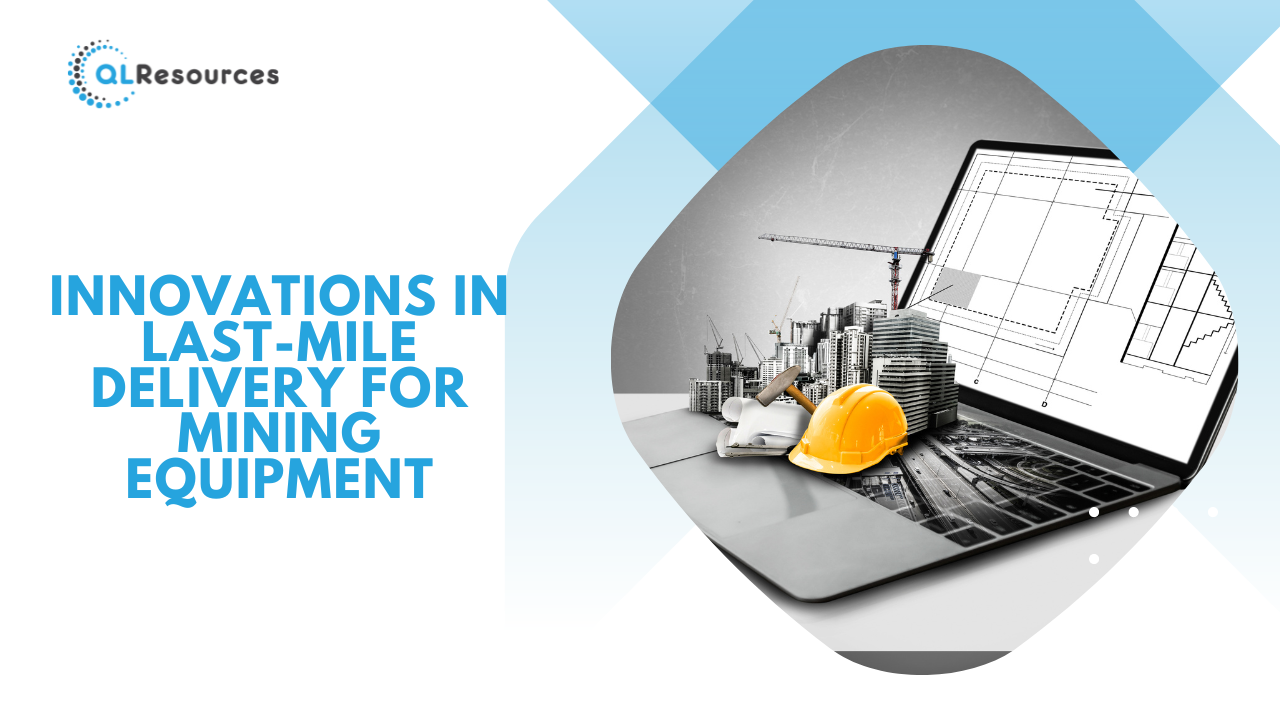
Last-mile delivery in the mining industry refers to the transportation of equipment, parts, and supplies from distribution centers or ports to remote mine sites, often located in challenging and inaccessible terrains. Efficient last-mile delivery is critical for ensuring uninterrupted operations, minimising downtime, and optimising resource utilistion in the mining sector. This article explores innovations in last-mile delivery solutions that are transforming the transportation of mining equipment and materials to remote sites.
Drone Delivery Systems:
Unmanned aerial vehicles (UAVs) or drones are increasingly being used for last-mile delivery of small and urgent items to remote mine sites. Drones offer fast and flexible transportation options, bypassing traditional road infrastructure limitations. They are particularly useful for delivering spare parts, tools, and emergency supplies to inaccessible areas or sites with rugged terrain.
Autonomous Vehicles and Robotics:
Autonomous vehicles and robotics play a crucial role in streamlining last-mile delivery operations in the mining industry. Self-driving trucks and robotic loaders can navigate challenging terrains and deliver equipment and materials to remote sites without human intervention, reducing labor costs and improving efficiency.
Modular and Containerised Solutions:
Modular and containerised delivery solutions enable the transportation of pre-assembled or pre-packaged equipment and materials to remote mine sites. Containers equipped with lifting mechanisms or modular units can be easily transported by trucks, trains, or ships and then assembled or deployed on-site, minimising the need for complex logistics and assembly processes.
Rail and Conveyor Systems:
Rail and conveyor systems provide efficient and cost-effective means of transporting bulk materials and heavy equipment over long distances to remote mine sites. Rail networks or conveyor belts can be installed to connect distribution centers, ports, and mine sites, enabling continuous and automated transportation of materials with minimal manual intervention.
Advanced Fleet Management Technologies:
Advanced fleet management technologies, including GPS tracking, telematics, and real-time monitoring systems, optimise the routing, scheduling, and utilisation of delivery vehicles in last-mile operations. These technologies enable mining companies to track the location and status of equipment and materials in transit, optimise delivery routes, and ensure timely and efficient deliveries.
Remote Monitoring and Maintenance:
Remote monitoring and maintenance systems allow mining companies to remotely monitor the condition and performance of equipment during transit and detect potential issues before they escalate. Predictive maintenance algorithms analyse real-time data from sensors and onboard diagnostics to identify maintenance needs and schedule repairs proactively, minimising downtime and optimising equipment reliability.
Collaborative Logistics Partnerships:
Collaborative logistics partnerships between mining companies, equipment suppliers, logistics providers, and technology vendors facilitate the seamless coordination of last-mile delivery operations. By sharing resources, expertise, and infrastructure, partners can optimise supply chain efficiency, reduce costs, and improve service levels for remote mine sites.
Innovative Packaging and Handling Solutions:
Innovative packaging and handling solutions help protect equipment and materials during transit and ensure safe and efficient delivery to remote mine sites. Custom-designed packaging, such as shock-absorbent crates or containers, and specialised handling equipment, such as forklifts or cranes, minimise the risk of damage and ensure that equipment arrives at its destination in optimal condition.
Alternative Energy Sources:
Alternative energy sources, such as solar or hybrid power, are increasingly being used to fuel delivery vehicles and equipment in last-mile operations. Solar-powered drones, electric trucks, and hybrid vehicles offer environmentally friendly and cost-effective alternatives to traditional fossil fuel-powered transportation, reducing emissions and dependency on fossil fuels.
Continuous Innovation and Adaptation:
The landscape of last-mile delivery in the mining industry is constantly evolving, driven by technological advancements, market trends, and regulatory changes. Continuous innovation and adaptation are essential for mining companies and logistics providers to stay ahead of the curve and meet the evolving needs of remote mine sites effectively.
Conclusion:
Innovations in last-mile delivery solutions are revolutionising the transportation of mining equipment and materials to remote mine sites, enabling mining companies to overcome logistical challenges, minimise downtime, and optimise resource utilisation. From drone delivery systems and autonomous vehicles to advanced fleet management technologies and collaborative logistics partnerships, these innovations are reshaping the way mining operations are conducted in remote and challenging environments. By embracing these innovations and investing in sustainable and efficient last-mile delivery solutions, mining companies can enhance their operational resilience, competitiveness, and sustainability in the global marketplace.